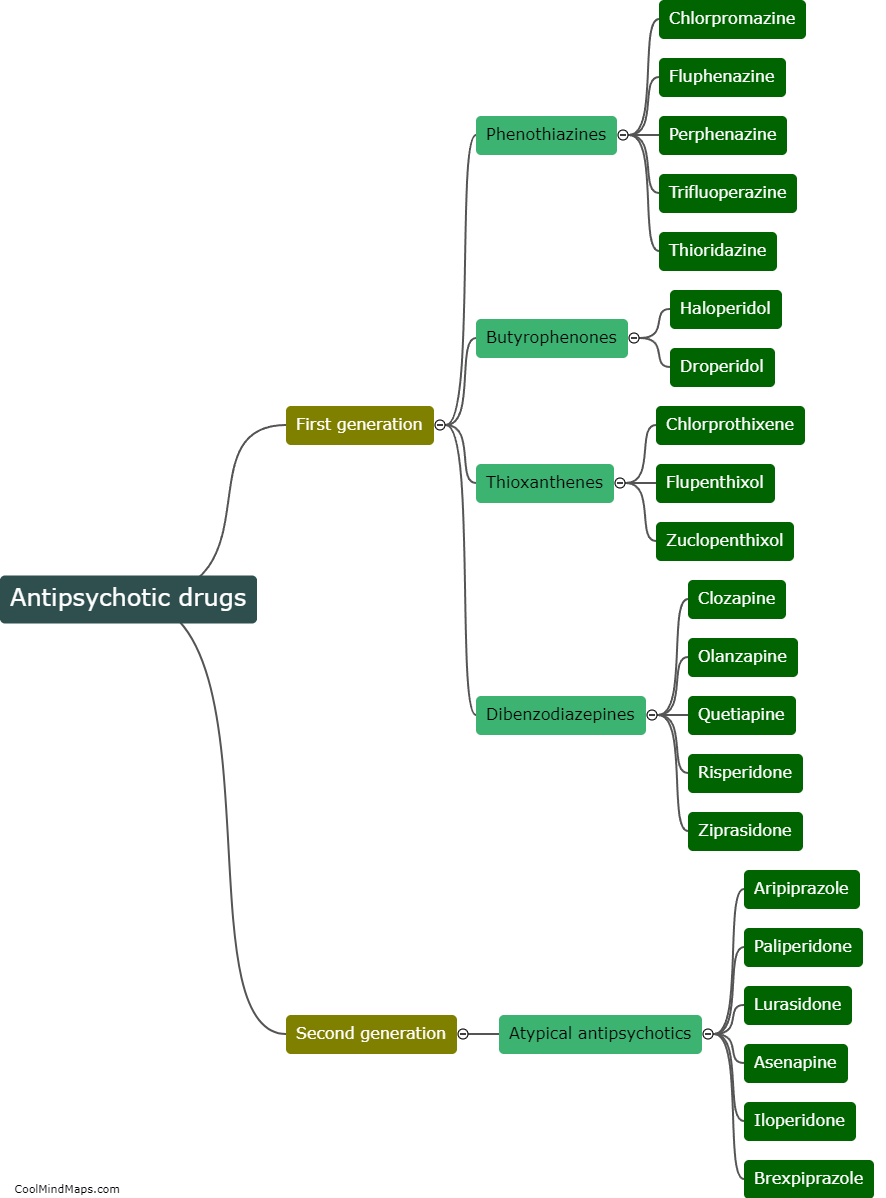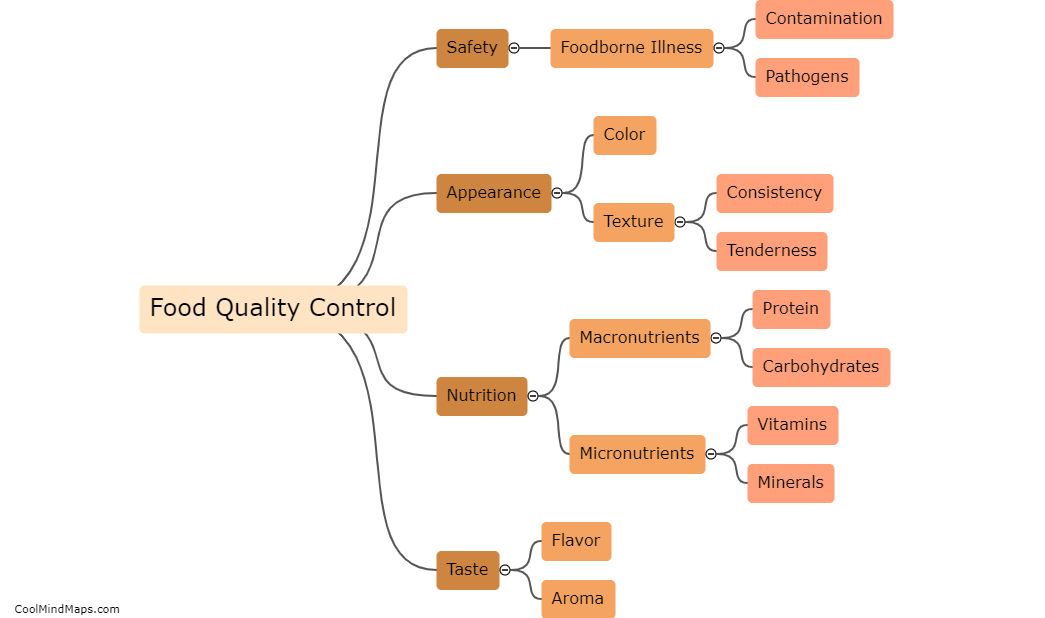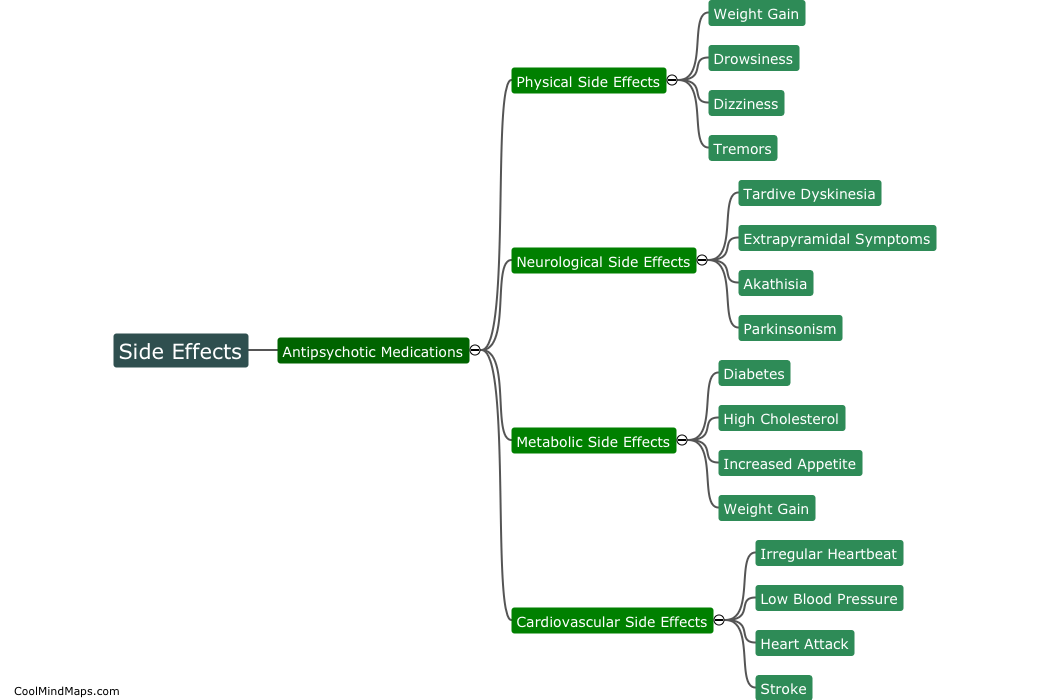What are the major classes of antipsychotic drugs?
The major classes of antipsychotic drugs include typical (first-generation) antipsychotics and atypical (second-generation) antipsychotics. Typical antipsychotics, such as chlorpromazine and haloperidol, primarily block dopamine receptors in the brain, reducing the symptoms of psychosis. However, these drugs have a higher risk of extrapyramidal side effects like involuntary muscle movements. On the other hand, atypical antipsychotics like risperidone and olanzapine also target dopamine receptors but additionally affect serotonin receptors, leading to a broader range of therapeutic effects. Atypical antipsychotics tend to have a lower risk of extrapyramidal side effects but may increase the risk of weight gain and metabolic concerns. The choice of antipsychotic medication is based on an individual's specific symptoms, medical history, and potential side effects.

This mind map was published on 6 July 2023 and has been viewed 96 times.











